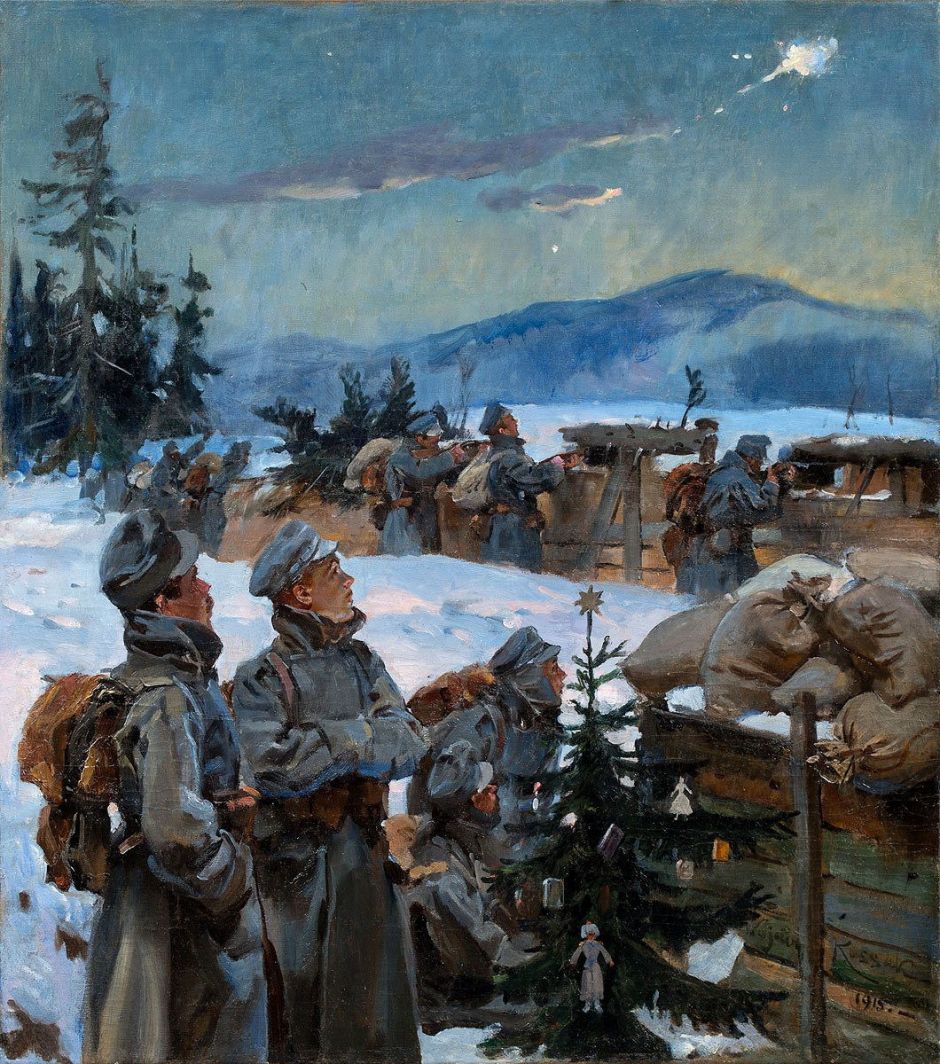Christmas traditions from Western societies have spread across the world. Visit Tokyo during its thoroughly secular and commercial version of the feast and you’ll see similar sights to those in Berlin, London and New York, among them the Christmas tree. However, outside Germany, this is more recent than many of the feast’s traditions. While Nativity Scenes, plays and cribs originated in the fourteenth century and quickly spread across Europe, before the nineteenth century Christmas trees were only really seen in Germany.
Then in the early nineteenth century, particularly following marriages between German royalty and those of other European nations, Christmas trees started to appear across Europe. They reached Britain by 1800, Denmark a few years later, and Austria in 1816. They became more generally popular as a result of Queen Victoria’s fondness for them, and from the 1840s swept across Europe then North America.

The Nordic countries had a plentiful supply. Hans Andersen Brendekilde’s finely detailed Cutting Christmas Trees from 1885 shows the men and boys of Danish families preparing some for their homes.

Other artists saw the merits of depictions of children responding to the tree, and the opportunity to play with light. Fellow Dane, and member of the Skagen group of Impressionists, Viggo Johansen painted this wonderfully loose study for a finished painting of Christmas Eve in 1891.
Because of an earlier family tragedy, the artist was banned from dancing around the family Christmas tree when he was a child. When he came to have his own family, he went out of his way to ensure that his six children weren’t so deprived. In 1891, he bought one of the largest Christmas trees in Copenhagen, and painted his family celebrating the feast around it. That took him about four months, during which the tree shed most of its needles, and his family had to keep attaching freshly cut branches to it to maintain its appearance. Unfortunately, his finished painting isn’t available in a suitable image, and in any case I prefer this more painterly study.

Those who couldn’t go off to the woods to cut their own Christmas trees bought them in one of the seasonal markets which were set up in most towns, as shown in Carl Wenzel Zajicek’s watercolour of the Christmas Market in Am Hof Vienna from 1908.

The younger Carl Oesterley captured more history in his painting of Queen Marie of Hanover Giving Presents to the Poor and Needy (1908). Princess Marie of Saxe-Altenburg, as I believe she is more properly known, lived between 1818-1907. The artist’s father, Carl Oesterley senior, had been court painter to her family, but in 1866 her father’s kingdom was annexed by Prussia. The Princess married King George V of England, and her family never relinquished the throne.
Princess Marie is shown as a saintly figure, bathed in light as the poor and needy – and a sick boy in the bed behind her – worship her grace. She also has at least three Christmas trees in the background, which seems a little excessive even for royalty.

Leopold Graf von Kalckreuth brings together what has since become a cliché in his sentimental group of Children by the Christmas Tree from about 1912.

On Christmas Eve at the end of 1913, almost exactly two years after his severe stroke, Lovis Corinth painted this delightful scene of their two young children enjoying their Christmas Decorations. Charlotte, the artist’s wife, is seen at the left edge, disguised as Father Christmas. Their son Thomas stands with his back to the viewer in front of a nativity scene close to his mother. Daughter Wilhelmine is at the right edge, inspecting one of the presents.

In 1915, when the whole of Europe was engulfed by the Great War, Wojciech Kossak painted this Soldiers’ Christmas. The decorations on the small Christmas tree in the foreground echo the uniforms in their greyness. In the sky, a shellburst acts as a metaphor for the guiding star which led the Magi to the infant Jesus in Bethlehem, but below that celestial light these infantry soldiers fight on.

In Nikolai Astrup’s woodcut print of his family’s Christmas Eve at Sandalstrand from 1918, his wife and young son have fallen asleep exhausted, amidst traditional Norwegian decorations, including a well-decked tree.

The Norwegian Naturalist Christian Krohg uses a Christmas tree to tell the story in his Seamstress’s Christmas Eve from 1921. A young woman is in her garret bed-sit, where she has been toiling long hours at her sewing machine. An affluent couple – a relative or employer perhaps – has just arrived to give the young woman a Christmas tree, a large wicker basket of presents, and more. Maybe that young woman can still be saved from the fate brought on by her sweated labour at the sewing machine, and her inevitable decline towards prostitution – an innovative role for the traditional Christmas tree.
Reference

